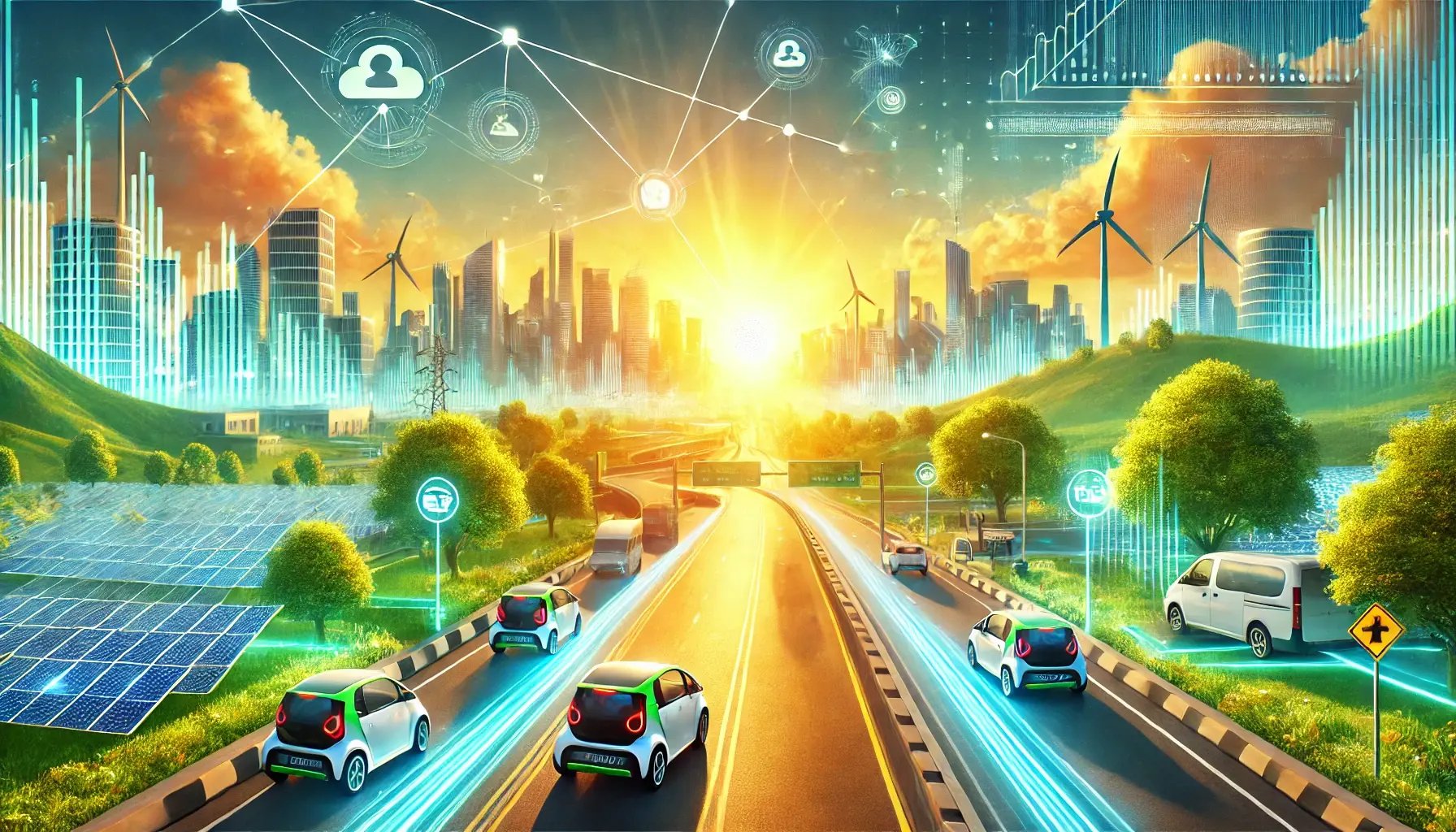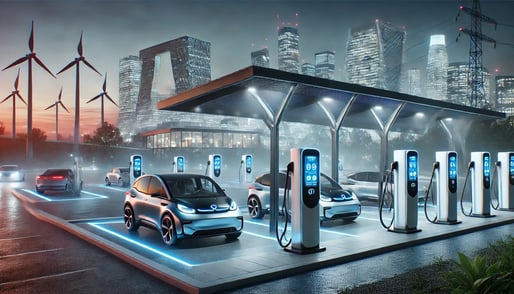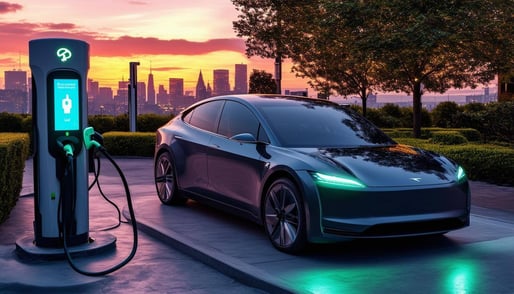Key Points Summary
- Significant Growth: Canada’s public EV charging network expanded by 24.2% from March 2024 to March 2025, adding 6,586 new public charging ports nationwide, totaling 33,767 ports.
- Accelerated Fast Charging: DC fast chargers grew by nearly 28%, significantly enhancing long-distance travel capabilities for EV drivers.
- Federal and Provincial Support: Major infrastructure investments from federal initiatives like the Zero Emission Vehicle Infrastructure Program (ZEVIP) and provincial programs (especially in Quebec, British Columbia, and Ontario) are driving rapid expansion.
- Reduced Range Anxiety: Expansion of fast-charging corridors along major highways, including the Trans-Canada Highway, provides unprecedented convenience for road trips and everyday driving.
- Future Ambitions: Canada aims for 100% zero-emission vehicle sales by 2035, requiring continued aggressive expansion—targeting nearly 679,000 public chargers by 2040.
- Practical Benefits for Drivers: Increased public chargers improve EV accessibility, convenience, and confidence for drivers, making electric vehicles a practical option for more Canadians.
Record Growth in EV Charging Infrastructure
Canada’s electric vehicle (EV) charging infrastructure has experienced a significant boom. Over the last year, the number of public EV charging stations in Canada grew by 24.2% year-over-year, according to Natural Resources Canada data. Between March 2024 and March 2025, 6,586 new public charging ports were installed across 1,559 new station locations, bringing the nationwide total to 33,767 public charging ports at 12,955 stations. This surge includes expansion in both regular Level 2 chargers and high-speed DC fast chargers – Level 2 units increased by 23.4%, while DC fast chargers jumped 27.8% in the same period (Canada’s EV Charging Network Grows 24% Year-Over-Year - Decoder.ca).

Figure: Growth of public EV chargers in Canada (total chargers, DC fast, and Level 2) from 2020 to 2025. The charging network’s expansion accelerated in 2023–2024, reaching over 33,000 total chargers by early 2025 (2025 EV charging network report: Canada nears 13,000 public stations).
This rapid growth in charging infrastructure represents a welcome development for Canada’s EV ecosystem. It means that EV owners in 2025 have far more options for charging on the go than even a year ago. The build-out of stations has been geographically broad, covering urban centers and connecting highway corridors. In fact, earlier federal initiatives achieved a coast-to-coast fast-charging network – over 1,000 fast chargers have been installed along the national highway system, enabling long-distance EV travel across Canada (Zero-emission vehicle charging stations). The continued addition of new stations in 2024 further densifies the network, reducing gaps and helping to alleviate “range anxiety” for drivers. Overall, the 24% jump in public chargers signals that infrastructure is beginning to catch up with the accelerating adoption of electric cars.
Government Policies and Incentives Driving Expansion
Government support has been a key driver of Canada’s EV charging boom. A combination of federal funding programs and provincial initiatives is spurring the deployment of charging stations at an unprecedented rate:
Federal Programs and Funding
The Zero Emission Vehicle Infrastructure Program (ZEVIP) is one major federal initiative fueling charger installations. ZEVIP provides cost-shared funding for new charging stations in public places, multi-unit residential buildings, workplaces, and vehicle fleets. The current goal of ZEVIP is to support the deployment of 33,500 EV chargers (along with a few hydrogen stations) across the country. In parallel, Natural Resources Canada’s earlier EVAFIDI program helped establish that backbone of over 1,000 fast chargers on highways by funding stations along core routes (Zero-emission vehicle charging stations).
Federal investment has recently been ramped up to meet ambitious national targets. In the 2022 budget, the Government of Canada set an objective of adding 50,000 new EV chargers to Canada’s network and allocated substantial funding to achieve it. This included an additional $400 million for charging infrastructure deployment through 2027, complemented by $500 million from the Canada Infrastructure Bank for large-scale charging and refueling projects (Zero-emission vehicle charging stations). These investments, alongside programs like ZEVIP, have led to approved projects for tens of thousands of new charging stations in the coming years.
The federal government has also introduced consumer incentives that indirectly encourage charging infrastructure growth. The Incentives for Zero-Emission Vehicles (iZEV) program, for example, offers rebates up to $5,000 on the purchase of electric cars, helping drive EV adoption. More EVs on the road increases demand for charging stations, reinforcing the case for further infrastructure investment. Together, these federal policies – funding for chargers and incentives to boost EV ownership – create a virtuous cycle accelerating Canada’s transition to electric mobility.
Provincial Initiatives
Provinces are playing a pivotal role in expanding charging networks through their own programs and targets. British Columbia (B.C.) and Quebec in particular lead the country in EV infrastructure deployment (and EV adoption rates). B.C. has built one of Canada’s largest public charging networks, supported by its CleanBC plan and related funding. By the end of 2023, there were approximately 5,000 public charging stations operating in B.C., a dramatic increase from about 1,500 stations in 2018. The province invested in further expansion with an additional $30 million in its 2024 budget to add 500 more public chargers, on the way to a goal of 10,000 public charging stations by 2030 (charging stations - Thoughtful Journalism About Energy's Future). B.C. also offers rebates for home and workplace charger installations and has mandated EV-ready building codes, ensuring new constructions are prepared for the charging needs of residents.
Quebec, for its part, has developed an extensive charging network anchored by the Hydro-Québec public charging program (Circuit Électrique). Quebec counts over 12,000 public charging stations in service (including more than 2,000 fast chargers) as of late 2024, making it another charging infrastructure leader in Canada. The Quebec government’s strategies, such as its Electric Vehicle Charging Strategy and the Plan for a Green Economy, set aggressive deployment targets and provide grants for station installation, particularly focusing on expanding fast chargers in under-served regions. These efforts are reflected in Quebec’s EV uptake – the province accounted for over half of Canada’s new EV sales in 2024 and has the highest ZEV adoption rate in the country (The Daily — New motor vehicle sales, January 2025).
Other provinces are catching up as well. Ontario has seen a growing network of public chargers through utilities and private investment (for example, the Ivy Charging Network backed by provincial power companies). Several provinces offer their own EV purchase incentives and subsidies for home or public chargers (e.g. New Brunswick’s rebates for residential chargers, Nova Scotia’s community charger funding), complementing the federal programs. This patchwork of provincial initiatives, tailored to regional needs, reinforces the nationwide expansion of charging infrastructure. Crucially, government policies at all levels send a clear signal to industry: building EV chargers is a priority, and there are funds and incentives available to make it happen.
Source: Natural Resources Canada
What the Charging Network Expansion Means for EV Drivers
For current and prospective EV owners, the 24% growth in charging stations is translating into tangible benefits on the road. More public chargers means greater convenience and peace of mind for drivers in 2025. In practical terms, EV drivers are now much more likely to find an available charger when and where they need one, whether it’s for a routine top-up around town or a fast charge on a highway trip.
One major impact is the reduction of range anxiety. As the charging network fills in, drivers can confidently plan longer journeys knowing that a charging station is never too far away. Key travel corridors are well-covered – thanks to federal and provincial investments, virtually all major highways now have fast-charging sites at regular intervals (Zero-emission vehicle charging stations). This allows EV drivers to travel between cities and provinces with relative ease, a freedom that wasn’t assured just a few years ago. The growing prevalence of DC fast chargers (which jumped nearly 28% in the past year) is particularly important for enabling quick pit stops on road trips, often recharging an EV to 80% in about 30 minutes or less.
In urban and suburban areas, the expansion of Level 2 chargers at public locations like parking lots, shopping centers, and workplaces provides more options for those who cannot charge at home. Canadians living in apartments or condos, for example, are benefiting from the increasing availability of public charging in their neighborhoods. Many municipalities and private operators have installed community charging hubs, so drivers can plug in while they shop or run errands. The addition of over 1,500 new public charging sites nationwide in the last year (Canada’s EV Charging Network Grows 24% Year-Over-Year - Decoder.ca) means shorter detours and wait times for charging, improving the overall EV ownership experience.
Importantly, the broader charging network also supports continued EV adoption. Early adopter EV owners might have been willing to hunt for the few charging stations available, but mainstream consumers expect refueling an electric car to be almost as convenient as a gas car. The recent boom in charging infrastructure is helping meet those expectations. As public awareness grows that there are tens of thousands of chargers available across Canada, more drivers feel comfortable making the switch to an electric vehicle. This in turn will further drive demand for even more charging stations, creating a reinforcing cycle of EV growth supported by infrastructure.
Reliability and uptime of charging stations are also areas of focus as the network matures. Governments and operators are now not only installing stations but also working on standards to ensure they are well-maintained and interoperable. For example, efforts are underway to adopt common connector standards and payment systems across different charging networks, so drivers can use any station with ease. Overall, the expanding web of chargers in 2025 means EV drivers have unprecedented freedom and flexibility – whether commuting, running local errands, or embarking on a cross-country adventure, the infrastructure needed to keep their cars charged is more accessible than ever.

Future Outlook: Meeting Canada’s EV Charging Needs
Despite the impressive gains in 2024, Canada’s EV charging infrastructure will need to scale up even more rapidly to keep pace with the electric transition in the coming years. The federal government has set ambitious zero-emission vehicle sales targets – requiring 20% of new light-duty vehicle sales to be electric by 2026, at least 60% by 2030, and 100% by 2035 (Canada's Zero-Emission vehicle sales targets). Achieving these targets means millions more EVs will be on Canadian roads in the next decade, all of which will require convenient charging. Policymakers and industry stakeholders are keenly aware that infrastructure must not become a bottleneck to this growth.
A recent government-commissioned report mapped out the scale of the challenge. The Dunsky-ICCT report (prepared for Natural Resources Canada) projects that Canada will need roughly 679,000 public charging ports by 2040 to support the country’s EV fleet. To put that in perspective, it’s nearly 20 times the number of public chargers available today. Meeting this need will require installing, on average, 40,000 public charging ports each year from 2025 through 2040 – a massive acceleration compared to the roughly 6,000–7,000 ports added in the last year. In short, the current charging boom must become an even bigger surge for Canada to hit its zero-emission goals. Significant investment (on the order of billions of dollars) and coordination with utilities for grid upgrades will be required to expand charging infrastructure at this scale (Canada needs 679,000 public charging ports by 2040: report).
The good news is that plans and funding are beginning to align with these long-term needs. The federal $400 million infrastructure fund and Infrastructure Bank financing are a start, and further rounds of funding are likely as EV adoption climbs. Private sector involvement is also growing: utilities, automakers, and independent charging providers are investing in new stations and technologies. For example, several charging network operators are expanding ultra-fast charging stations (150 kW and above) to enable even quicker charge times, and exploring smart charging solutions to reduce strain on the electrical grid. Collaborations between government and companies (such as installing chargers at popular retail locations or gas station sites) will continue to increase the visibility and convenience of EV charging.
Emerging standards and innovations could further streamline the expansion. Automakers and charging providers are coalescing around standard connector formats to ensure all EV models can use all public chargers. Initiatives to open proprietary networks (for instance, Tesla’s Supercharger network being partially opened to non-Tesla vehicles) mean that previously siloed resources will become accessible to a wider user base, effectively multiplying charging options for everyone. Meanwhile, improvements in charging speed and smarter placement of stations (using data to identify gaps in coverage) will make each new charger more impactful.
The road ahead, however, is not without challenges. Scaling up to hundreds of thousands of chargers will require overcoming hurdles such as supply chain constraints for charging hardware, the need for trained electricians and installers across the country, and navigating local permitting and zoning for new stations. Ensuring equitable access is another priority – rural and remote communities, as well as apartment dwellers, should not be left behind in the EV revolution. This means targeted investments to fill geographic gaps and the deployment of chargers in multi-unit residential buildings and other underserved locations. Energy infrastructure must also keep up: utilities will need to upgrade distribution networks and manage increased electricity demand, which the Dunsky report notes will likely entail hundreds of millions in grid investments (Canada needs 679,000 public charging ports by 2040: report).
Despite these challenges, the trajectory is clearly set. Canada’s 24% growth in public charging stations is a strong indicator that momentum is building. Governments are committed to aggressive EV policies, and stakeholders across industries are collaborating to build out the necessary charging ecosystem. For EV owners and enthusiasts, the outlook is encouraging – by 2030, charging an electric car in Canada is expected to be even easier and faster than it is today, with tens of thousands of new chargers coming online and innovative technologies making charging more seamless. The EV charging boom we’re witnessing now is just the beginning; with sustained effort, it will pave the way toward an electric vehicle future where convenient charging is available to all Canadian drivers.
Thanks for reading!
References
- Decoder (2025). “Canada’s EV Charging Network Grows 24% Year-Over-Year.” (Canada’s EV Charging Network Grows 24% Year-Over-Year - Decoder.ca)
- Transport Canada (2025). “Zero-emission vehicle charging stations – Infrastructure programs and results.” (Zero-emission vehicle charging stations) (Zero-emission vehicle charging stations) (Zero-emission vehicle charging stations)
- Government of British Columbia (2023). “New public charging stations will make EVs more accessible – News Release.” (charging stations - Thoughtful Journalism About Energy's Future)
- Statistics Canada (2025). “New motor vehicle sales, 2024 – ZEV sales data.” (The Daily — New motor vehicle sales, January 2025)
- Transport Canada (2024). “Canada’s Zero-Emission Vehicle Sales Targets.” (Canada's Zero-Emission vehicle sales targets)
- Electric Autonomy Canada (2024). “Canada needs 679,000 public charging ports by 2040: report (Dunsky & ICCT study findings).” (Canada needs 679,000 public charging ports by 2040: report)
Mar 19, 2025 7:20:13 PM
%20charging%20infrastructure%20with%20industry%20professio.webp?width=1792&height=1024&name=DALL%C2%B7E%202025-03-19%2016.06.49%20-%20A%20realistic%2c%20high-resolution%20image%20of%20a%20government%20official%20in%20a%20suit%20discussing%20electric%20vehicle%20(EV)%20charging%20infrastructure%20with%20industry%20professio.webp)


Comments